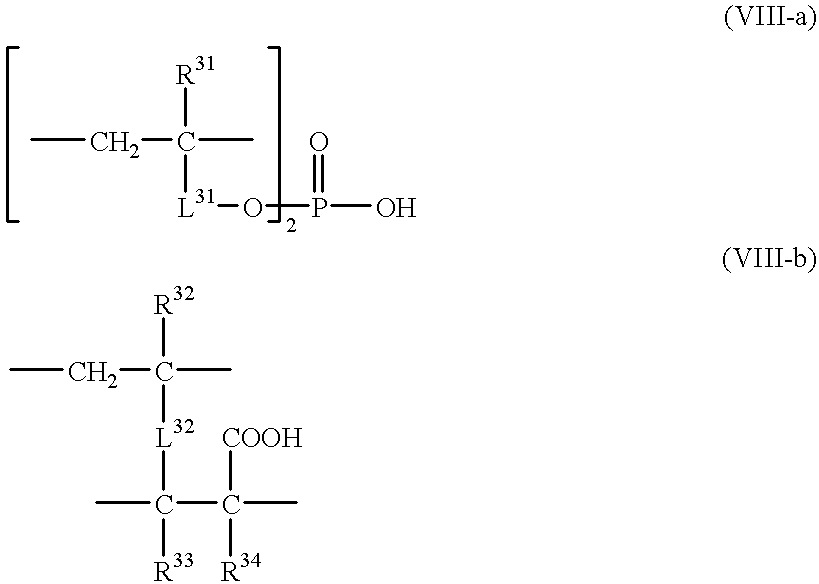Anti-reflection film and display device using the same
a technology of anti-reflection film and display device, which is applied in the direction of television system, photosensitive materials, instruments, etc., can solve the problems of insufficient mass production productivity of the deposition process, inability to finely disperse inorganic particles, and formation of high and low refractive index layers
- Summary
- Abstract
- Description
- Claims
- Application Information
AI Technical Summary
Problems solved by technology
Method used
Image
Examples
example 1
Preparation of Titanium Dioxide Dispersion
Thirty weight parts of titanium dioxide [weight mean particle size of primary particles: 50 nm, refractive index: 2.70], 3 weight parts of the following anionic monomer (1), 3 weight parts of the following anionic monomer (2), and 64 weight parts of methyl ethyl ketone were mixed by means of a sand grinder to prepare a dispersion of titanium dioxide. ##STR9##
The weight mean particle size of titanium dioxide in the prepared dispersion was determined by means of a coaltar counter. The results are shown in Table 1.
Preparation of Coating Liquid for High Refractive Index Layer
A mixture of dipentaerythritol pentaacrylate and dipentaerythritol hexaacrylate [DPHA, Nippon Kayaku Co., Ltd.], a photopolymerization initiator [Irgacure 907, Ciba-Geigy], a photosensitizer [Kayacure DETX, Nippon Kayaku Co., Ltd.], and methyl ethyl ketone were mixed. The weight ratio of the photopolymerization initiator to the photosensitizer was set at 3 / 1, and the volume ...
example 2
30 weight parts of titanium dioxide [weight mean particle size of primary particles: 50 nm, refractive index: 2.70], 6 weight parts of the following anionic monomer (3), and 64 weight parts of methyl ethyl ketone were mixed by means of a sand grinder to prepare a dispersion of titanium dioxide. ##STR10##
Except for using thus prepared dispersion, the procedure of Example 1 was repeated to produce an anti-reflection film and to evaluate the film. The results are set forth in Table 1.
example 3
30 weight parts of tin oxide [weight mean particle size of primary particles: 10 nm, refractive index: 2.00], 3 weight parts of the anionic monomer (1) in Example 1, 3 weight parts of the anionic monomer (2) in Example 1, and 64 weight parts of methyl ethyl ketone were mixed by means of a sand grinder to prepare a dispersion of tin oxide.
Except for using thus prepared tin oxide dispersion in place of titanium dioxide dispersion, the procedure of Example 1 was repeated to produce an anti-reflection film and to evaluate the film. The results are set forth in Table 1.
PUM
| Property | Measurement | Unit |
|---|---|---|
| Particle size | aaaaa | aaaaa |
| Particle size | aaaaa | aaaaa |
| Nanoscale particle size | aaaaa | aaaaa |
Abstract
Description
Claims
Application Information
 Login to View More
Login to View More - R&D
- Intellectual Property
- Life Sciences
- Materials
- Tech Scout
- Unparalleled Data Quality
- Higher Quality Content
- 60% Fewer Hallucinations
Browse by: Latest US Patents, China's latest patents, Technical Efficacy Thesaurus, Application Domain, Technology Topic, Popular Technical Reports.
© 2025 PatSnap. All rights reserved.Legal|Privacy policy|Modern Slavery Act Transparency Statement|Sitemap|About US| Contact US: help@patsnap.com



